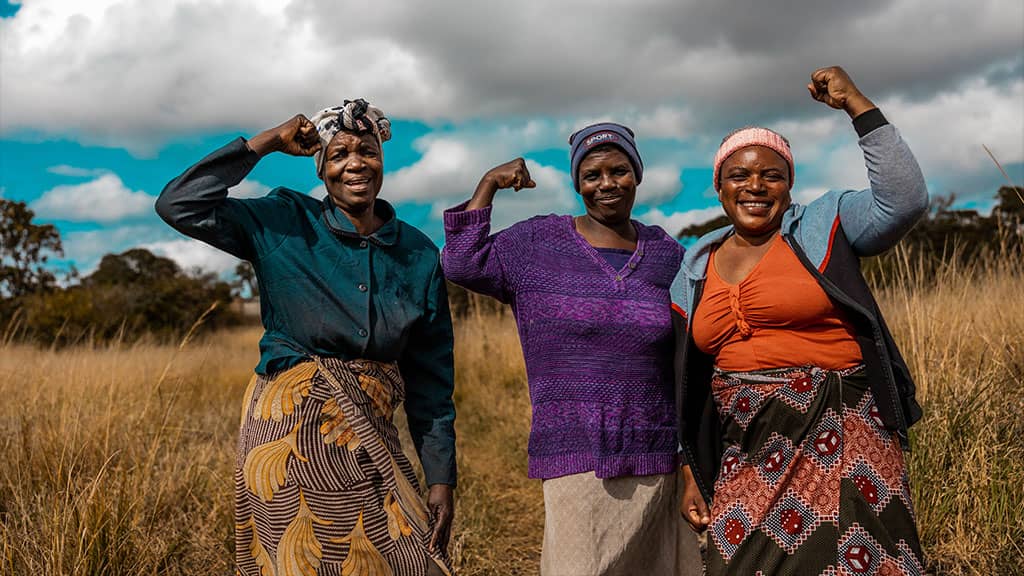
Africa South of the Sahara is the world region with the highest and most concerning hunger levels. While the region’s GHI scores have significantly improved over the past two decades, hunger remains serious and progress has virtually stalled since 2016. The high GHI score is driven by the highest undernourishment and child mortality rates of any region by far.
Undernourishment rose sharply between 2015 and 2023, particularly in West and Central Africa, owing to recurring conflicts; economic challenges such as currency devaluations, soaring inflation, stagnating production, and trade barriers; and heavy reliance on food imports (WFP 2024). In 2022, 72 percent of the population in Africa South of the Sahara were unable to afford a healthy diet—the highest rate of any world region (FAO et al. 2024a). In five countries—all in Africa South of the Sahara—more than 1 in 10 children dies before their fifth birthday.
The region also has the highest neonatal mortality rate in the world, accounting for more than 40 percent of global newborn deaths (Zerfu 2024). A recent study of 45 countries in Africa South of the Sahara suggests that while economic growth benefits child survival, environmental degradation undermines these gains (Fotio et al. 2024).
Climate change is wreaking havoc across much of Africa South of the Sahara.
Since 1961 climate change has reduced agricultural productivity growth in Africa by 34 percent.
Climate change is also wreaking havoc across much of Africa South of the Sahara. Since 1961 climate change has reduced agricultural productivity growth in Africa by 34 percent (IPCC 2022). Southern Africa is currently experiencing a severe drought—reported to be the worst on record in parts of Zambia and Zimbabwe—with devastating impacts for the population, which depends largely on rainfed subsistence crop production and drought-sensitive water sources (Kimutai et al. 2024). In Malawi, the worst dry spell in a century may reduce the maize harvest by 22.5 percent. The government has declared a state of disaster, as maize is the country’s most important staple crop and is produced by 9 out of 10 farming households (De Weerdt et al. 2024; Duchoslav et al. 2024). Since October 2020, large parts of Eastern Africa have faced their worst drought in 40 years, resulting in harvest failures, livestock losses, decreased surface water availability, and increased conflict (Kimutai et al. 2023). In Ethiopia, the situation is particularly severe for pastoralists, who have few livestock holdings and income-generating activities in the wake of the 2020–2023 drought and the 2020–2022 conflict (FEWS NET 2024b; FSIN and GNAFC 2024; United Nations–Ethiopia 2024).
Somalia is facing a protracted hunger crisis driven by ongoing conflict, economic challenges, and climate shocks, all in the context of a state that has limited capacity to carry out basic government functions. Over half the population, 51.3 percent, lacks sufficient calories—the second-highest value of all countries (Figure 1.4). Child wasting and mortality rates are also among the world’s highest. Despite significant progress since 2000, hunger remains protracted. In 2017, 2022, and 2023, some regions and populations faced famine risks. While rains, humanitarian aid, and improved capacities to respond to crises slightly mitigated the devastating effects of six consecutive poor rainy seasons, erratic rainfall also caused flooding, displacement, and crop destruction (FSIN and GNAFC 2024; Humanitarian Outcomes 2023).
Sudan is facing a hunger crisis on a scale not experienced since the Darfur crisis of the early 2000s. Even before fighting broke out in 2023, Sudan faced very high child undernutrition and high levels of acute food insecurity. The escalating conflict, the deliberate destruction of Sudan’s food system, the disruption of people’s coping mechanisms, and the active denial of humanitarian access have driven the country to the brink of famine (Hoffman 2024; IFPRI and WFP 2024), and in July 2024 famine was confirmed in parts of North Darfur (IPC 2024b). The country is also experiencing the largest and fastest-growing displacement crisis globally, resulting in escalating needs and instability in resource-strained host communities in neighboring countries, particularly Chad and South Sudan (WFP and FAO 2024). In South Sudan, more than 60 percent of the population faced an acute food crisis in 2023, with famine looming for more than 40,000 people (FSIN and GNAFC 2024).